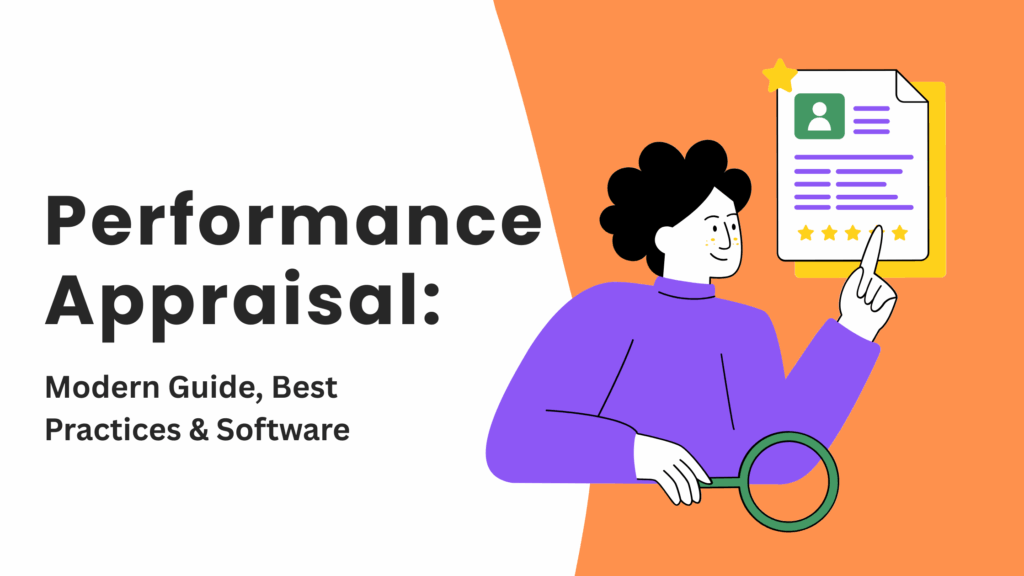Performance Appraisal: Modern Guide, Best Practices & Software

Performance appraisal is a cornerstone of effective talent management and organizational growth. For forward-thinking businesses, especially those leveraging B2B SaaS solutions like Quikchex.in, a robust performance appraisal process is key to unlocking employee potential, driving engagement, and achieving business goals. In this comprehensive guide, we’ll explore what performance appraisal is, why it matters in 2025, and how to implement a modern, impactful appraisal system.
What Is Performance Appraisal?
Performance appraisal is a structured process for evaluating employee performance against predefined goals and competencies. It involves setting clear expectations, monitoring progress, providing feedback, and aligning individual contributions with organizational objectives. The ultimate aim is to foster professional development, recognize achievements, and identify areas for improvement.
Why Performance Appraisal Matters in 2025
- Aligns Individual and Business Goals: Ensures every employee’s work supports the company’s strategic direction.
- Drives Engagement and Retention: Regular feedback and recognition boost morale and reduce turnover.
- Enables Data-Driven Decisions: Objective evaluations inform promotions, compensation, and succession planning.
- Supports Continuous Improvement: Identifies skill gaps and training needs, fueling employee growth.
The Modern Performance Appraisal Process: Step-by-Step
- Set Clear, Measurable Goals
Begin by defining SMART goals (Specific, Measurable, Achievable, Relevant, Time-bound) that are directly tied to business objectives. This clarity ensures performance reviews are objective and actionable. - Establish Performance Criteria
Identify the key competencies, behaviors, and deliverables to be assessed. Criteria may include job-specific tasks, teamwork, leadership, and innovation. - Monitor Performance Continuously
Move beyond annual reviews—adopt regular check-ins, monthly one-on-ones, and digital tools for real-time feedback and progress tracking. This keeps employees aligned and motivated. - Collect and Analyze Data
Gather quantitative metrics (KPIs, sales numbers, project completions) and qualitative feedback (peer reviews, self-assessments, manager notes). - Review and Discuss Performance
Conduct a two-way appraisal meeting. Discuss achievements, challenges, and growth opportunities. Use 360-degree feedback for a holistic view. - Provide Constructive Feedback
Offer specific, actionable feedback. Recognize accomplishments and address areas for improvement. Focus on behaviors and outcomes, not personalities. - Set New Objectives and Development Plans
Collaboratively set new goals and identify development opportunities for the next cycle. Link objectives to business needs and individual aspirations. - Document the Appraisal
Maintain clear records of discussions, ratings, and agreed-upon actions. Documentation supports transparency and future reference. - Recognize and Reward Performance
Acknowledge top performers with awards, bonuses, promotions, or public recognition. This reinforces positive behaviors and drives motivation.
Best Practices for Performance Appraisal in 2025
- Consistency: Use standardized forms and processes across the organization.
- Manager Training: Equip managers with skills for unbiased, constructive appraisals.
- Employee Involvement: Encourage self-assessment and open dialogue.
- Continuous Feedback: Don’t wait for annual reviews—provide feedback throughout the year.
- Follow-Up: Regularly revisit goals and development plans to ensure accountability.
Types of Performance Appraisal Methods
- Traditional Appraisal: Manager-driven, based on pre-set criteria.
- 360-Degree Feedback: Input from peers, subordinates, and supervisors for a comprehensive view.
- Self-Assessment: Employees evaluate their own performance.
- Management by Objectives (MBO): Progress measured against agreed-upon objectives.
- Behaviorally Anchored Rating Scales (BARS): Uses specific behavioral examples for ratings.
Example: Performance Appraisal in Action
Employee: Jane Doe, Marketing Specialist
Criteria: Creativity, quality of work, adherence to deadlines
Feedback: Jane consistently delivers high-quality, creative campaigns but needs to improve deadline management.
Goals: Enhance time management and continue to innovate in campaign strategies.
Frequently Asked Questions (FAQ) about Performance Appraisal
Q1: What is the main purpose of performance appraisal?
A: To evaluate employee performance, provide feedback, align individual goals with company objectives, and support professional development.
Q2: How often should performance appraisals be conducted?
A: While annual reviews are common, best practice is to supplement them with quarterly or monthly check-ins for continuous feedback.
Q3: What are the benefits of using performance appraisal software?
A: Software streamlines the process, ensures consistency, enables real-time feedback, and provides analytics for better decision-making.
Q4: How can biases be minimized in performance appraisals?
A: Use standardized criteria, 360-degree feedback, and train managers to recognize and counteract common biases.
Q5: What should be included in a performance appraisal meeting?
A: Review of achievements, discussion of challenges, feedback exchange, and setting of new goals and development plans.
Q6: Can performance appraisals impact compensation?
A: Yes, appraisal outcomes often inform decisions on raises, bonuses, and promotions.
Conclusion
A modern, well-structured performance appraisal process is essential for business success in 2025. By setting clear goals, providing regular feedback, and leveraging SaaS solutions like Quikchex.in, organizations can drive employee engagement, support growth, and achieve strategic objectives.
Ready to transform your performance appraisal process?
Contact Quikchex.in for a personalized demo and see how our platform can help you build a high-performing team!